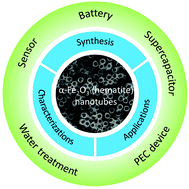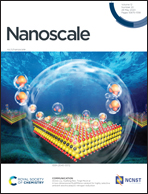A review of the α-Fe2O3 (hematite) nanotube structure: recent advances in synthesis, characterization, and applications
Abstract
α-Fe2O3 nanotubes are exceptional one-dimensional transition metal oxide materials with low density, large surface area, promising electrochemical and photoelectrochemical properties, which are widely investigated in lithium-ion batteries, photoelectrochemical devices, gas sensors, and catalysis. They have drawn significant attention to the fields of energy storage and conversion, and environmental sensing and remediation due to the increase in the global energy crisis and environmental pollution. Many efforts have been made toward controlling the morphology or impurity doping to improve the intrinsic properties of α-Fe2O3 nanotubes. In this review, we introduce the synthesis methods and physicochemical properties of α-Fe2O3 nanotubes. The fabrication conditions, which are important for the physicochemical properties of materials, are also listed to describe the synthesis processes. Furthermore, the development and breakthrough of various applications in batteries, supercapacitors, photoelectrochemical devices, environmental remediation, and sensors are systematically reviewed. Finally, some of the current challenges and future perspectives for α-Fe2O3 nanotubes are discussed. We believe that this timely and critical mini-review will stimulate extensive studies and attract more attention, further improving the development of the α-Fe2O3 (hematite) nanotube structure.

- This article is part of the themed collection: Recent Review Articles


 Please wait while we load your content...
Please wait while we load your content...